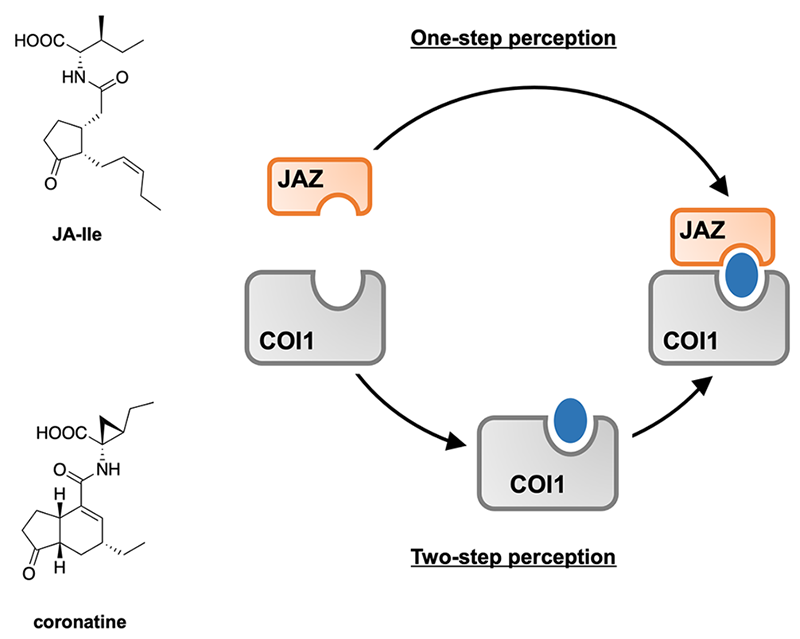In the post-genomic era, the study of intracellular protein-protein interactions (PPIs) is essential for understanding and controlling biological activities. In particular, PPI regulation by organic compounds (small molecules) is expected to be a pillar of the next generation of drug discovery.Most biological functions in plants are regulated by phytohormones, which are small molecules. Phytohormones are unique molecules that induce PPIs by acting as molecular glue, binding two proteins in vivo.
One type of phytohormone, jasmonic acid isoleucine (JA-Ile), is a molecular glue that induces PPI between two proteins, COI1 and JAZ. Coronatine, produced by microorganisms, is known to be a structural mimic of JA-Ile and, like JA-Ile, is known to act as a molecular glue. In the present study, the mechanism of action of JA-Ile and coronatine as molecular glue was compared using two methods: isothermal titration calorimetry and differential scanning calorimetry. The results showed that these two small molecules induced PPI of COI1 and JAZ in different ways: while JA-Ile induced PPI by attracting both COI1 and JAZ in a single step, coronatine attracted JAZ after first binding to COI1 in a two-step mechanism and inducing PPI. This difference was also attributed to structural differences in the ring moiety of JA-Ile and coronatine. This is the first example of PPI being induced by different mechanisms between the same proteins. As coronatine, which induces PPI by a two-step mechanism, has stronger activity as a molecular glue than JA-Ile, these results are expected to provide useful guidelines for the future development of molecular glues.

